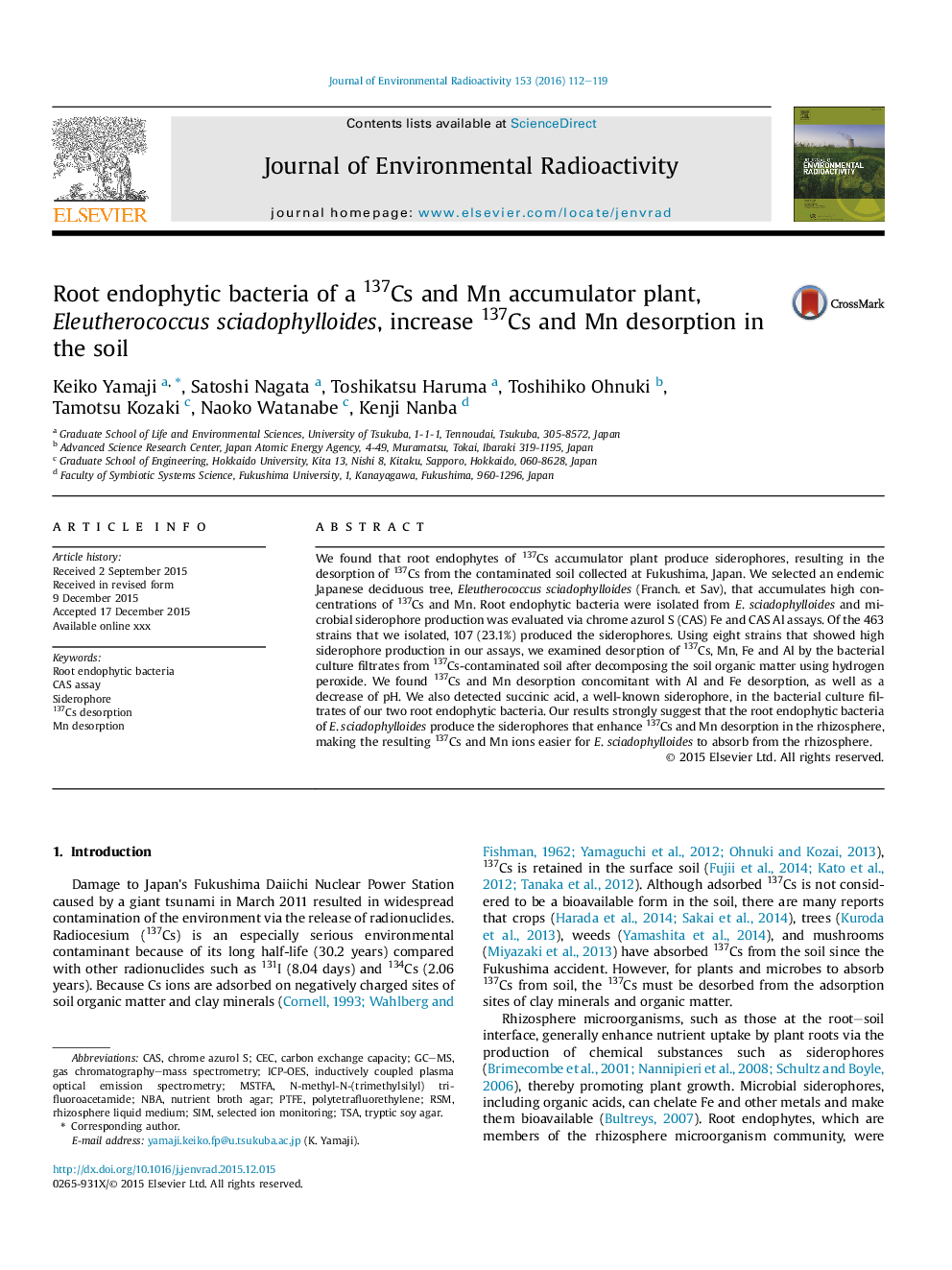| Article ID | Journal | Published Year | Pages | File Type |
|---|---|---|---|---|
| 8082012 | Journal of Environmental Radioactivity | 2016 | 8 Pages |
Abstract
We found that root endophytes of 137Cs accumulator plant produce siderophores, resulting in the desorption of 137Cs from the contaminated soil collected at Fukushima, Japan. We selected an endemic Japanese deciduous tree, Eleutherococcus sciadophylloides (Franch. et Sav), that accumulates high concentrations of 137Cs and Mn. Root endophytic bacteria were isolated from E. sciadophylloides and microbial siderophore production was evaluated via chrome azurol S (CAS) Fe and CAS Al assays. Of the 463 strains that we isolated, 107 (23.1%) produced the siderophores. Using eight strains that showed high siderophore production in our assays, we examined desorption of 137Cs, Mn, Fe and Al by the bacterial culture filtrates from 137Cs-contaminated soil after decomposing the soil organic matter using hydrogen peroxide. We found 137Cs and Mn desorption concomitant with Al and Fe desorption, as well as a decrease of pH. We also detected succinic acid, a well-known siderophore, in the bacterial culture filtrates of our two root endophytic bacteria. Our results strongly suggest that the root endophytic bacteria of E. sciadophylloides produce the siderophores that enhance 137Cs and Mn desorption in the rhizosphere, making the resulting 137Cs and Mn ions easier for E. sciadophylloides to absorb from the rhizosphere.
Keywords
Related Topics
Physical Sciences and Engineering
Energy
Nuclear Energy and Engineering
Authors
Keiko Yamaji, Satoshi Nagata, Toshikatsu Haruma, Toshihiko Ohnuki, Tamotsu Kozaki, Naoko Watanabe, Kenji Nanba,
